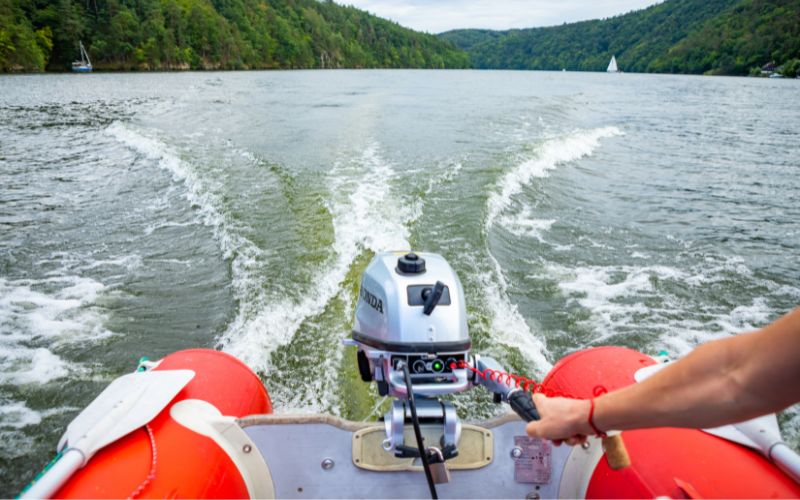If you own an outboard, chances are that your goal as a boater is to get back in the water as soon as possible.
To even be asking this question probably means that you’re having trouble with your outboard’s thermostat.
Or maybe you’ve been given advice by a fellow enthusiast that running your engine without one is either “just fine” or even “much better.”
Well, is it true?
Answers on the internet are often conflicting, and the answer to this question is no different.
Thankfully, we’re here to help!
In this article, we’ll be examining a few important details before you decide to run an outboard motor without a thermostat:
- What’s A Thermostat, Anyway?
- Will The Outboard Engine Run Without A Thermostat?
- How to Spot A Bad Thermostat
- Recommendations
- Conclusion
Table of Contents
What’s A Thermostat, Anyway?
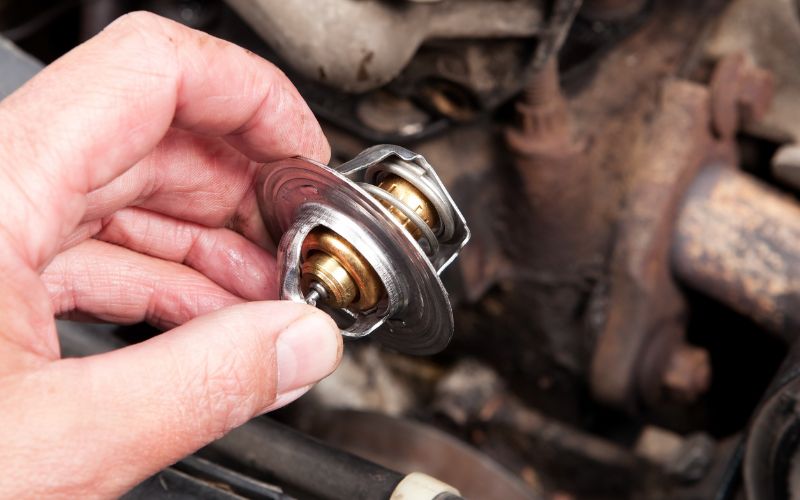
In order to work properly, automobile engines have components that are collectively called the cooling system.
The thermostat belongs to this system of components.
Outboard motors are very similar to automobile engines, so naturally, they usually come with a thermostat.
According to the California Institute of Technology, a cooling system serves a number of functions:
- It dissipates excess heat from an engine.
- It makes sure that the engine stays at a temperature for optimal efficiency.
- It causes the engine’s working temperature to rise up to the optimum figure as rapidly as possible.
In other words, an engine’s cooling system, including the thermostat, reliably regulates its working temperature.
Will Not Having A Thermostat Stop The Outboard Engine From Functioning?
So, is the thermostat important? Yes.
Will the outboard engine run without it? Technically, yes.
But before you stop reading this article to go straight off into the water, we strongly recommend you consider a few things.
There are a number of factors involved in how successful running your outboard engine without a thermostat would be.
Climate
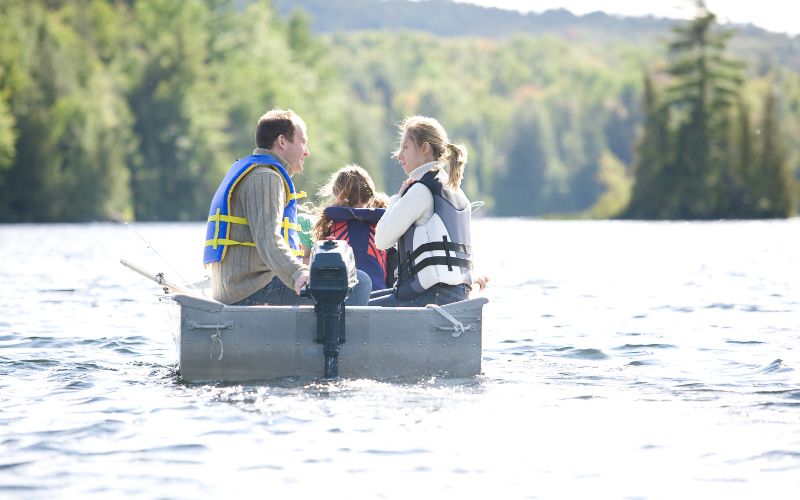
Firstly, let’s talk about the weather.
The temperature of the water where you’re planning to run your thermostat-less outboard engine will greatly impact the unit’s longevity and usefulness.
When you first start your outboard motor, it will rapidly rise in temperature until it reaches the optimal heat level.
Once the motor reaches that optimal temperature, the thermostat’s function is to keep the motor at that optimal temperature.
Without the thermostat, the outboard engine will tend to lose heat and take longer to warm up. This is especially frequent in states with colder climates and water temperatures.
Depending on how the other components in the cooling system work, the motor can even overheat!
Scary!
Some boaters have dismissed these dangers as unfounded, especially in warmer waters, but we would recommend caution whatever climate you sail in.
Motor Design
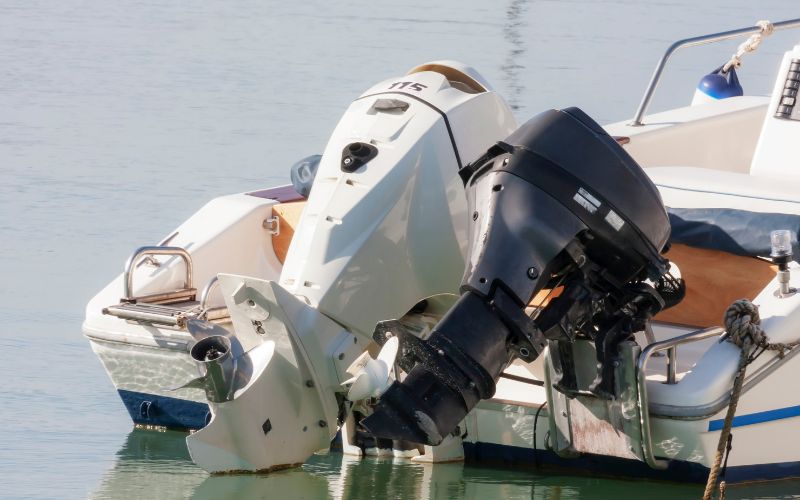
Another factor to consider is the design of your outboard motor.
Owners and mechanics alike have repeatedly shared that running without the thermostat might not be so bad, depending on the brand and design of your outboard engine.
This scenario seems especially true with some units manufactured earlier than the 80s. The reason has to do with a difference in the interaction between the engine and cooling system components.
So if the outboard motor you have is an older design, there’s a good chance of running your boat without significant risk.
If you have a more modern engine where thermostats are essential to the cooling system, you’ll want to think twice.
Systems typically seen in EFIs (Electronic Fuel Injection) and more recent 2-stroke or 4-stroke motors generally cannot run without a functioning thermostat.
Length Of Use
In a pinch, such as when a replacement thermostat isn’t yet available, or you get a stuck thermostat (where the valve is stuck at a closed or open position), running your outboard motor without it is fine.
But the longer you run your engine without a thermostat, the greater the risk of damaging not just your outboard motor but other components as well.

The outboard you spent a lot of money on might break down or deteriorate years before its supposed lifespan ends.
It’s also generally accepted that running an outboard motor without a thermostat is much better than running it with one that’s stuck.
So if that happens to you in the middle of a trip, it might be better to simply remove the thermostat than keep the stuck part in there and run it.
If you find yourself still without a replacement, some owners advise getting a restrictor to serve a similar function as a thermostat.
A water restrictor generally serves the same function as a thermostat, allowing water flow to cool the motor down.
Keep in mind that these measures are intended for short-term use.
The best way for you to keep your outboard motor running for a long time is to stay up-to-date on maintenance measures, including replacing a missing, corroded, or stuck thermostat.
How To Spot A Bad Thermostat
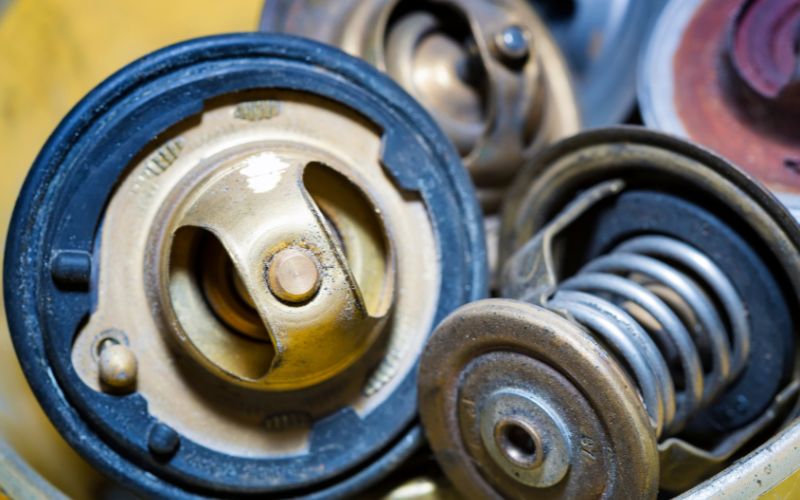
To ensure that an outboard motor runs at optimum performance, one of the most important things to make sure of is that your motor’s thermostats are in good condition.
If a thermostat is stuck in the open position, a couple of things can happen:
- The engine might take longer than usual to warm up
- The engine will run at a cooler temperature, which means it’ll perform suboptimally
- Water can come out of the exhaust
- You probably won’t get very far in colder waters
On the other hand, a thermostat that’s stuck in the closed position can cause the following:
- Overheating, usually when idle or at low speeds
- The engine will slow down to get the temperature down
- Overconsumption of fuel
So it’s imperative that you do everything you can to prevent your thermostat from getting stuck.
Recommendations
With all that’s been said, allow us to suggest a few things you can do in order to maintain peak performance in your outboard engine:
1. Check Your Thermostats Frequently.
And by ‘frequently,’ we mean at the very least, annually.
Regardless of where you boat, check on your thermostats regularly, like every two years. That’s usually the time they need to be replaced.
Check your thermostat more frequently if you often run in saltwater, as corrosion can be a bigger problem.
2. Regularly Maintain Your Outboard Engine.

Thermostats are the least of your problems when you neglect to maintain your outboard motors properly and regularly.
Not only will you run the risk of inefficient use of your unit, but you might even speed up the deterioration or damage of your outboard engines if you leave problems unchecked.
3. Run The Outboard Engine Without A Thermostat If You Need To, But Only When You Really Need To!
We’ve already laid out the risks of running an outboard motor without a thermostat. Keep all the knowledge above in mind if ever you’re in a pinch and need to do this.
Conclusion
We hope this cleared up the fog around the issue of running an outboard motor without a thermostat.
We hope that moment never comes, but hopefully, this article equipped you with sufficient information to determine the best course of action. Forewarned is forearmed, after all.
Stay safe out there, sailor!

I created this site to help people – to help you – with your boat problems. Instead of helping one person at a time, I want this website to be the “one-stop-shop” for everyone’s boating concerns. Read more.

